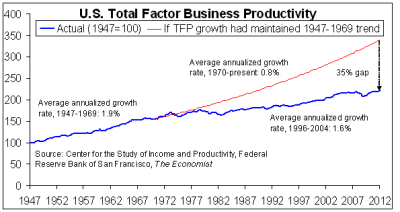Jeremie Averous's Blog, page 53
October 4, 2018
How Algorithms Are More Effective Than Human Decisions – Even If Bias Still Needs to be Managed
In a counterpoint to the ideas represented by the “Weapons of Math Destruction” concept – how algorithms could reinforce inequality and prejudice (refer to our post ‘How Algorithms Can Become Weapons of Math Destruction‘), the HBR paper ‘Want Less-Biased Decisions? Use Algorithms‘ discusses the fact that algorithms lead to less bias.
 “Critiques and investigations [about the perverse effects of algorithms] are often insightful and illuminating, and they have done a good job in disabusing us of the notion that algorithms are purely objective. But there is a pattern among these critics, which is that they rarely ask how well the systems they analyze would operate without algorithms. And that is the most relevant question for practitioners and policy makers: How do the bias and performance of algorithms compare with the status quo? Rather than simply asking whether algorithms are flawed, we should be asking how these flaws compare with those of human beings.”
“Critiques and investigations [about the perverse effects of algorithms] are often insightful and illuminating, and they have done a good job in disabusing us of the notion that algorithms are purely objective. But there is a pattern among these critics, which is that they rarely ask how well the systems they analyze would operate without algorithms. And that is the most relevant question for practitioners and policy makers: How do the bias and performance of algorithms compare with the status quo? Rather than simply asking whether algorithms are flawed, we should be asking how these flaws compare with those of human beings.”
The paper then quotes a number of studies and papers showing that automation reduces dramatically mistakes and some biases in human decision-making. An effort still needs to be made to ensure algorithms are not biased, however following public awareness a lot of activities are happening in that field, including publication of the source code of some key algorithms. The paper thus rather takes a positive view on the subject. Let’s keep a tab to see how it evolves over the next few months!

October 2, 2018
How Most of Our Decisions Are Bets
Following on the previous post ‘How We Should Differentiate Decision and Outcome‘, Annie Duke (professional poker player turned business speaker and author) in her excellent book ‘Thinking in Bets: Making Smarter Decisions When You Don’t Have All the Facts‘ affirms that actually most decisions are bets. This was quite striking for me at first, but after some thoughts I now see the rationale.
 Most of the decisions we take in life are fraught with uncertainty. We almost never have full information, and we are at the mercy of wildly unexpected events (also called ‘luck’). Of course the degree of uncertainty differs from decision to decision, but for most of our life-changing decisions, uncertainty is quite high.
Most of the decisions we take in life are fraught with uncertainty. We almost never have full information, and we are at the mercy of wildly unexpected events (also called ‘luck’). Of course the degree of uncertainty differs from decision to decision, but for most of our life-changing decisions, uncertainty is quite high.
“World – class poker players taught me to understand what a bet really is : a decision about an uncertain future. The implications of treating decisions as bets made it possible for me to find learning opportunities in uncertain environments. Treating decisions as bets , I discovered , helped me avoid common decision traps , learn from results in a more rational way , and keep emotions out of the process as much as possible.”
“Thinking in bets starts with recognizing that there are exactly two things that determine how our lives turn out : the quality of our decisions and luck . Learning to recognize the difference between the two is what thinking in bets is all about.”
Looking at business or life decisions as bets gives quite an interesting edge to the process, which I find very worthwhile.

September 29, 2018
How We Should Differentiate Decision and Outcome
Because of the role of luck in our lives we need to be able to differentiate the quality of our decision and its outcome. That’s a key lesson I learnt from an excellent book ‘Thinking in Bets: Making Smarter Decisions When You Don’t Have All the Facts‘ by Annie Duke, a professional poker player turned business speaker and author.
 We have a tendency to equate the quality of our decisions with their outcome. “Poker players have a word for this : “resulting”. When I started playing poker , more experienced players warned me about the dangers of resulting , cautioning me to resist the temptation to change my strategy just because a few hands didn’t turn out well in the short run“.
We have a tendency to equate the quality of our decisions with their outcome. “Poker players have a word for this : “resulting”. When I started playing poker , more experienced players warned me about the dangers of resulting , cautioning me to resist the temptation to change my strategy just because a few hands didn’t turn out well in the short run“.
This distinction is profound and I do fall into this trap too. Like almost everybody: “ask any group members to come […] with a brief description of their best and worst decisions of the previous year . I have yet to come across someone who doesn’t identify their best and worst results rather than their best and worst decisions .”
I am committing to try to discern the quality of the decision versus its outcome, because I believe it is important when it comes to improving one’s decision-making ability.

September 27, 2018
How We Need to Change the Business Strategy Vocabulary
In her post ‘You say Tomato, I say Tomato… When Language is the Enemy’, Valeria Maltoni remarks that a lot of business strategy vocabulary revolves around war-related terms. The businessman is a tough warrior. She also remarks that war-terminology typically denotes scarcity: “The war metaphor creates the wrong incentives. A mindset of scarcity is a self-fulfilling prophecy, a train wreck waiting to happen. Competition is also keeping people stuck in their ways ? this produces different flavors of thinking about problems and separate languages”
 Business Warrior
Business WarriorIn the new world of abundance of the Collaborative Age, this vocabulary is probably not completely adapted (although there will still be battles for some market positions though). It should be possible to replace it with a more collaborative vocabulary, in particular when it comes to strategies for change and transformation, which require more of an introspective and gentle approach.
Developing such a vocabulary is a trademark of some successful coaches and change consultants, and the cornerstone of a successful organisational transformation.

September 25, 2018
How Easily Groups Can Create Language Barriers and Why They Need to Be Overcome
Building on our previous post ‘How Each Social Group Has Its Own Vernacular Tongue‘, it is astounding how groups can quickly create language barriers with the outside world. It creates a sense of identity. In her post ‘You say Tomato, I say Tomato… When Language is the Enemy‘, Valeria Maltoni explains how that can create difficult situations.
 The solution is to make sure people agree on the meaning of words and acronyms, and try to get the group to explain its activities to an outsider, preferably a client. “Lack of a common language impacts a common understanding of values and culture. When nobody is on the same page, the context shifts based on where you are.”
The solution is to make sure people agree on the meaning of words and acronyms, and try to get the group to explain its activities to an outsider, preferably a client. “Lack of a common language impacts a common understanding of values and culture. When nobody is on the same page, the context shifts based on where you are.”
“A common language is key to creating the environment that delivers consistent experiences“. Creating this common language is often the first task of a consulting project, or an entity integration project. Let’s not be impressed by the language barrier, we all know how to learn foreign languages. It comes quickly!

September 22, 2018
How to Accept that Low Productivity Moments Are Needed to be Productive
Following on the previous post on how to measure personal productivity, one aspect of Seth Godin’s ‘Business/busyness‘ post has retained my attention. “Our productivity varies wildly. It depends on the project, on the connections, on where we are in the process. ”
 Getting ready for a productive stint
Getting ready for a productive stintI would bring it one notch further: depending on how we measure it, our personal productivity varies greatly during a day or over any given time period, and that’s needed. The extreme example is to take a power nap (productivity zero) before a productive moment. We can’t be hyper-productive at any time – that’s an energy issue.
Even at the scale of the week or month, we might spend a lot of time researching or reading books on the subject (low productivity) before producing something that the world will greatly value (high productivity). We take leave days off to be refreshed for work. As a consultant, if client fees are used as a measurement of value created (for the client), periods of Business Development and proposal production periods would be categorised improductive, but they end up generating substantial value for a new client.
Therefore, even if our average productivity or value creation is important, we need to accept that it varies wildly during our day, week, month or year – and that low productivity moment are needed to prepare for high productivity periods. It looks like a paradox, but it is in fact complementary.

September 20, 2018
How to Address the Challenge of Measuring Personal Productivity in the Collaborative Age
Following up from our previous post on the mystery of overall economic productivity, let’s address the issue of personal productivity. This is issue is addressed in a rather long post by Seth Godin ‘Business/busyness‘.
 For people immersed in the new economy, the concept is quite difficult: “If you had a factory job, it wasn’t your job to worry about productivity. Somebody else was in charge. You did what you were told, all day, every day. Now, more than ever, you’re likely to be running a team, managing a project or deciding on your own agenda as a free agent. Time is just about all you’ve got to spend.”
For people immersed in the new economy, the concept is quite difficult: “If you had a factory job, it wasn’t your job to worry about productivity. Somebody else was in charge. You did what you were told, all day, every day. Now, more than ever, you’re likely to be running a team, managing a project or deciding on your own agenda as a free agent. Time is just about all you’ve got to spend.”
In any case, just keeping busy defeats the purpose of productivity. “Busy is not your job. Busy doesn’t get you what you seek. Busy isn’t the point. Value creation is.
You only get today once. Your team does too. How will you spend it?”
Seth Godin then goes into explaining that productivity being the measure of output produced by the time taken to produce it, it all comes to measuring the value created. And it’s where is gets somewhat difficult. While “likes and friends are not an output“, on the contrary, meaningful conversations with team members in your project have value and require time. Thus, measuring actual productivity is difficult. Are we spending time on bureaucratic tasks or actual tasks that create value to a client?
Measuring productivity, financially or otherwise, remains a major challenge even at personal level. However at that level, we can pick and choose the measurement yard we prefer: money, relationship quality, or maintaining our garden.

September 18, 2018
How to Explain the Productivity Gap Mystery
Productivity in the Collaborative Age is a major mystery. Apparently, from the economists perspective, it would seem that the productivity improvement rate has dramatically dropped in developed countries since the 1970s. On the other hand, we definitely manage to do more in a day than before, in great part thanks to the support provided by our GPS, the communication capability of our phones and all sorts of productivity tools we have been given.
 From my perspective, there would then be two explanations to this apparent contradiction: either the measurement of value created is flawed, or while some of us have dramatically increased their productivity, others have dramatically lowered their’s.
From my perspective, there would then be two explanations to this apparent contradiction: either the measurement of value created is flawed, or while some of us have dramatically increased their productivity, others have dramatically lowered their’s.
I tend to believe that there is something wrong with the measurement of value created, because I observe that a lot of the services offered by modern technology serve to diminish the cost of services while improving the service itself (which has value), or even create services that have no value thanks to connections created. Of course, we should not dismiss the hypothesis that social networks have also diminished the productivity of part of the population, however this has to be compared to watching TV which also involved a lot of time previously (but was less pervasive in every location of our daily life).
However, this productivity issue still shows that income tends to diminish for the amount of work performed, since productivity is also linked to the value created.
This goes back to the issue of GDP as good measurement of economic health. Those measurements of the Industrial Age will have to be revamped soon because they are becoming increasingly obsolete.

September 15, 2018
How the Compensation Model of Creators Changes in the Collaborative Age
Cory Doctorow in his post ‘12% of music industry revenues go to musicians‘ describes the business model of the music business. The title is made to get readers to react about how little that is. But the point developed frankly by Cory Doctorow in the post is that “The best part? 12% is an improvement. Before the internet came along, it was seven percent.”
 Modern technologies and removing layers of intermediaries has thus created somewhat more value for artists. However, that remains comparatively little compared to modern forms of direct selling and live events. “Musicians have thus turned to touring as their main source of income nowadays. The strategic shift has paid off in some ways — but barely. ”
Modern technologies and removing layers of intermediaries has thus created somewhat more value for artists. However, that remains comparatively little compared to modern forms of direct selling and live events. “Musicians have thus turned to touring as their main source of income nowadays. The strategic shift has paid off in some ways — but barely. ”
Of course, one of the issues is that the overall music industry revenue has diminished in the meantime, and thus finally musicians probably end up earning more or less the same.
Creatives and artists have always generated an ecosystem living off their art and it continues. Marketing and logistics still play a substantial part of expenses needed to promote creation and get it known. This will remain, unless the artist also takes charge of those aspects.
Still, we can watch as increased shares of value get to the creators. And this trend will continue.

September 13, 2018
How Irrational Decisions Are Made Based on Single Indicators – Stop the Madness!
Performance Indicators are great inventions. They allow to assess quickly how we are doing. But of course, they need to be well chosen, accurately measured, and relevant. I observe so many instances of irrational decisions taken on a basis on a single unquestioned performance indicator that it almost becomes a pattern of modern life!
 GDP is obviously one of the greatest culprits although it starts being questioned (see previous post ‘How Difficult It Is To Replace GDP by an Appropriate Wealth Creation Measurement‘). It informs the decision of governments and international institutions although its basis is shaky to say the least.
GDP is obviously one of the greatest culprits although it starts being questioned (see previous post ‘How Difficult It Is To Replace GDP by an Appropriate Wealth Creation Measurement‘). It informs the decision of governments and international institutions although its basis is shaky to say the least.
The Shanghai University Ranking is another one. This ranking is based on certain criteria which are not necessarily correlated to education quality (e.g. it is based on research publications etc.). However it is now been used as a reference worldwide and irrational decisions are being taken in many educational institutions with a view to increase their ranking in this particular list.
In today’s complex world, taking decision on the basis of a single indicator is inappropriate, moreover if this indicator is not reliable or representative. Multiple indicator decision-making should be enforced, if possible that show what kind of compromise is actually being decided.




